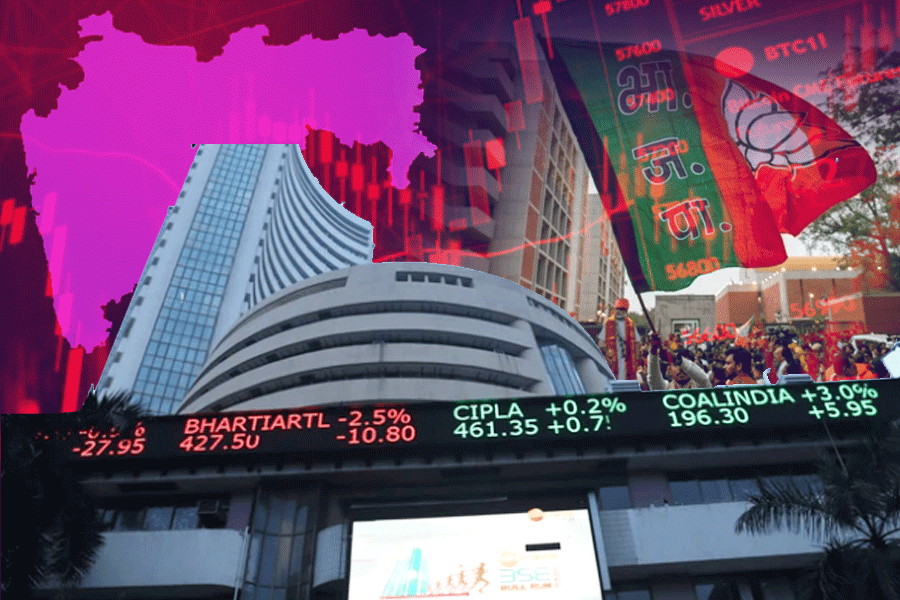It is the time when economic outlooks for the forthcoming year are visualised. This year’s unimaginable upheavals and their collective overhang make us question the reliability of these customaries on this occasion though. A quick walkabout from the lifting of the curtains on 2022 to its end shows how epic geopolitical events, including a full-blown war, energy and food price shocks, a continuing pandemic, weather extremities and more, upturned all economic calculations, viewpoints, foresights, and else. Forecasts of vital macroeconomic variables failed miserably; these were revised and re-revised as economic prospects dented and deteriorated all over the world. Challenges compounded with accelerating force and in varied spheres as responses to multiple shocks ranged from the political to those of economic policies. These remain on the landscape. The randomness endures. So the question to ask at the very least is how wide could the error bands be for next year’s predictions.
The economist, Adam Tooze, recently described the world as one in a ‘polycrisis’, a state in which economic and non-economic shocks are intertwined down the line. The individual shocks are individually dissimilar — the pandemic, a war leading to a real possibility of a third world war, and increased frequency and severity of climate change-related events. But they interact in such a way so “that the whole is even more overwhelming than the sum of the parts” (“Welcome to the world of the polycrisis”, Financial Times). When the unthinkable becomes a reality, “a new sense of overarching global risk” enters the “public consciousness”, challenging the coping abilities and mechanisms. That includes everyone — governments, people, markets, businesses and so on.
Most of these shocks and their repercussions are still playing out. The war in Ukraine continues; sanctions related to it remain in place while new ones are being added, such as the recent energy price caps. Climate change and the war are set to keep food prices much higher than those in pre-pandemic levels. The ongoing pandemic in China threatens almost a fifth of world economic output, and that of many other economies integrated with it. Though commodities and goods’ prices have started easing, inflation is likely to be hard to tame because persistent elevation has raised expectations. Fiscal risks have increased with rapid interest rate increases this year. The changes also endanger financial stability, as known and unknown risk in the pipeline can cause volatility and eruptions in vulnerable or exposed parts; a few incidents have already occurred.
All pointers are towards the maintenance of unpredictability. This is anticipated to be higher next year because of uncertain paths the unwinding of shocks could take, while more disturbances cannot be ruled out. The head of the International Monetary Fund, Kristalina Georgieva, recently cautioned that the outlook was “exceptionally uncertain” and “dominated by risks”, including those from global financial tightening; moreover, it isn’t known how long these shocks will last and what other shocks may come. In October, predicting the world economy to grow slower in 2023, the international agency said the worst was yet to come. The Institute of International Finance, a global association of the financial industry, expects the global economy in 2023 will be as weak as it was in 2009 after the global financial crisis. The OECD underscored the “unusually imbalanced and fragile outlook” for next year. And very recently, the IMF said that worsening indicators show further downgrades to global growth are likely; along with others, it has sounded alarm on a global recession.
Looking back to the beginning of this year, the economic contest was largely singular — recovering quickly and strongly from the pandemic. The 2023 outlook in comparison is riddled with the burden of either resolving or bearing a gamut of intersecting challenges, immediate and of fundamental nature — a legacy of this year. Many issues remain hugely uncertain: for example, who can predict the outcome of a war, its fallouts, and with what degree of precision? Then, inflation probabilities depend a lot upon chance events and their effects, while little is understood or known about structural effects that the pandemic may have caused. Affected by everything, growth outcomes become highly uncertain in such settings.
What does the prevalent environment mean for India? The Survey of Professional Forecasters, a report prepared by the central bank, expects a median real GDP growth of 6% next year after the 6.9% anticipated this year.
Many label India a bright spot in the light of this economic performance in these troubled times when most countries face grave challenges and risk either a recession or low growth. There’s also a common supposition that a solid domestic demand base and fundamentals make India sufficiently shockproof to external hits and macro-financial risks.
However, immunity from an overall hostile, uncertain environment is impossible. This year’s variability shines a light in this regard. Last week was the third time the central bank scaled down its growth projection for 2022-23. Not a big revision — from 7% to 6.8%. But it’s a full 100 basis points lower than the original, February forecast (7.8%). What triggered the first revision in April (to 7.2%)? Geopolitical escalation, a surge in oil-commodity prices, significant weakening of external demand and increased uncertainties about monetary policy regularisation in major advanced countries. Less than three months ago, on September 30, the Reserve Bank of India had decreased this further to 7%, and, once again, due to geopolitical tensions, tighter global financial conditions and slowing external demand. And at the end of this year, the central bank already foresees marginally slower growth in the first quarter of next year — April-June 2023 — compared to its September reading. Growth performance in the final quarter of this financial year is yet to unfold too.
The capriciousness of this year and the fact that it’s a more uncertainty-filled environment ahead weaken beliefs about economic prophecies. These are undeniably doubtful omens to close 2022. However, the murkiness spilling over warrants preparedness for more growth disappointments in 2023 than less.
Renu Kohli is a macroeconomist











